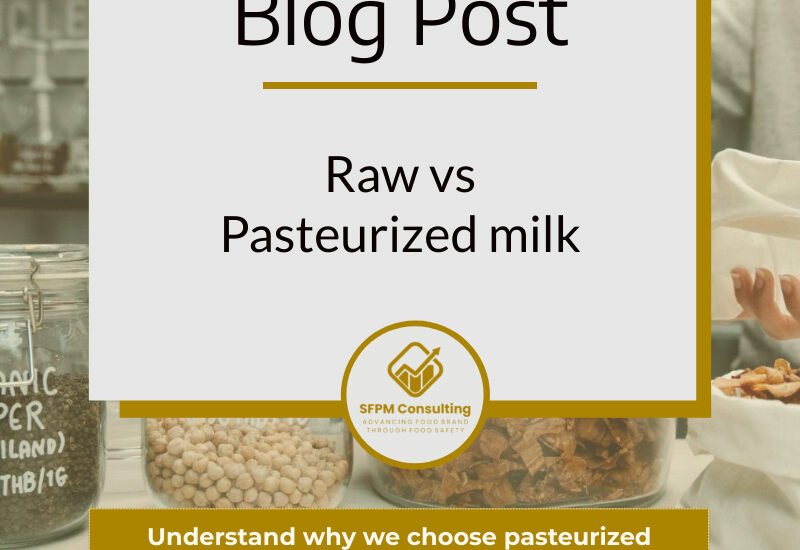Raw versus Pasteurized Milk
- August 16, 2020
- Posted by: Felicia L
- Category: Food Safety

Most of our milk supply at the store is pasteurized milk. A very small percentage of milk is consumed raw with no further processing after milking the cow or other milk-producing animals.
On the good side, pasteurization eliminates harmful bacterias and reduce some enzymes that turn milk sour. However, exposure to milk with even a small amount of heat does reduce some essential vitamins and minerals and other nutrients.
Although it is widespread milk consumption across all age groups, milk is more commonly consumed at a younger age by young children. We know that our children’s immune system is weak and still developing at a young age. Other vulnerable populations may include the elderly and people with weakened immune systems. They may get sick due to their inability to fight germs.
Don’t get me wrong. Raw milk contains both the bad and the good bacteria. While pasteurization aims to kill all these bacteria (indirectly affecting the nutrient content) in the milk, pasteurization does help reduce the risk of our children getting sick. As a bonus, with the bacteria and some enzymes deactivated, the process also helps prolong the shelf life of milk. Thus, keeping them fresh when we need them.
So, why do we still have raw milk and is it harmful to drink raw milk? One of the reasons we have raw milk is that a certain group of people believe that the benefit of raw milk can outweigh the need for pasteurization. Of course, not all raw milk can make you sick. We usually get ill due to the consumption of many bacteria or a sufficient amount of pathogenic bacteria.
Tips for consuming raw milk:
- Drink them fresh
- Keeping milk at low temperatures below 4°C can help prolong its shelf life.
- Always be aware of the risk of raw milk for yourself and your family.
